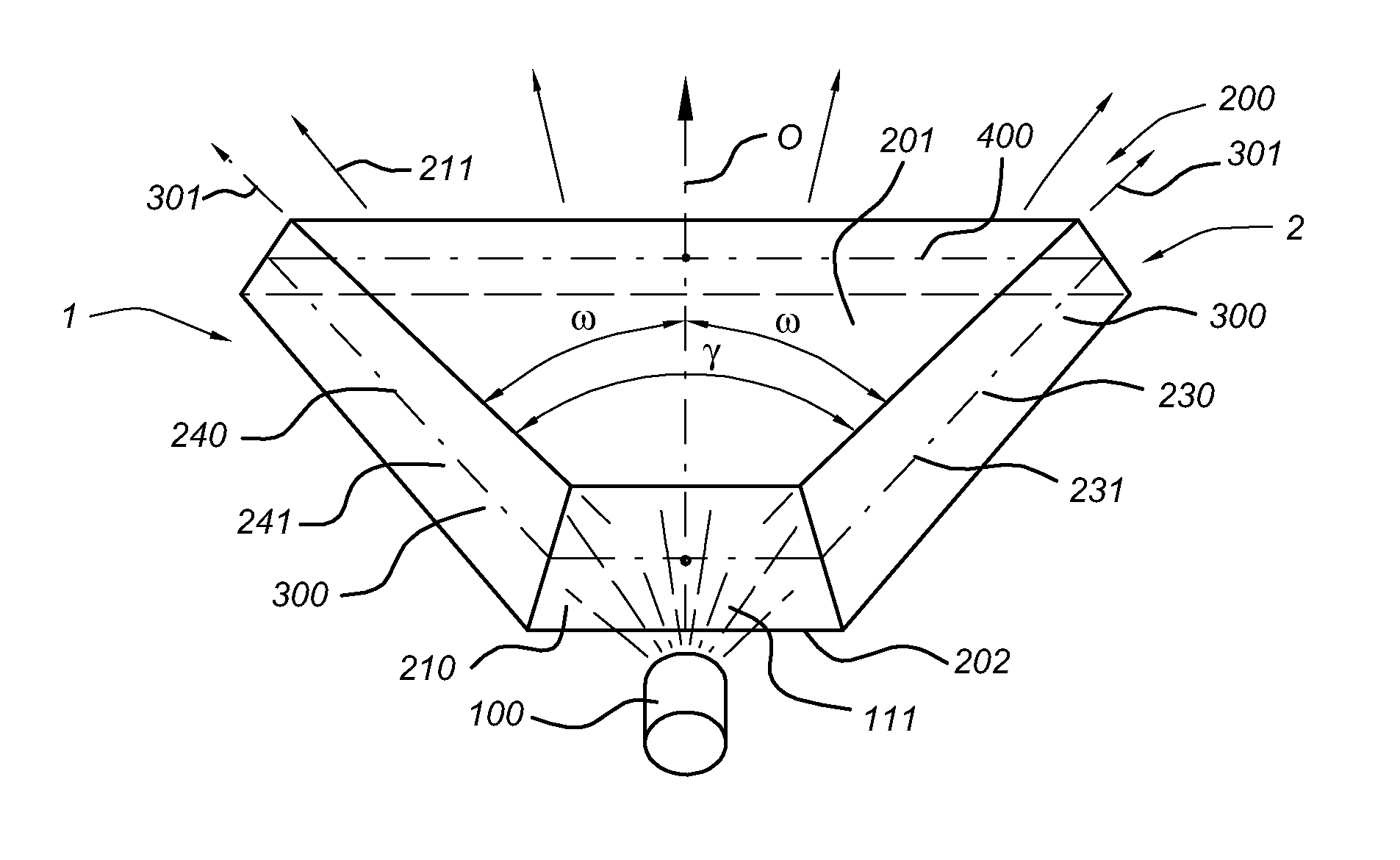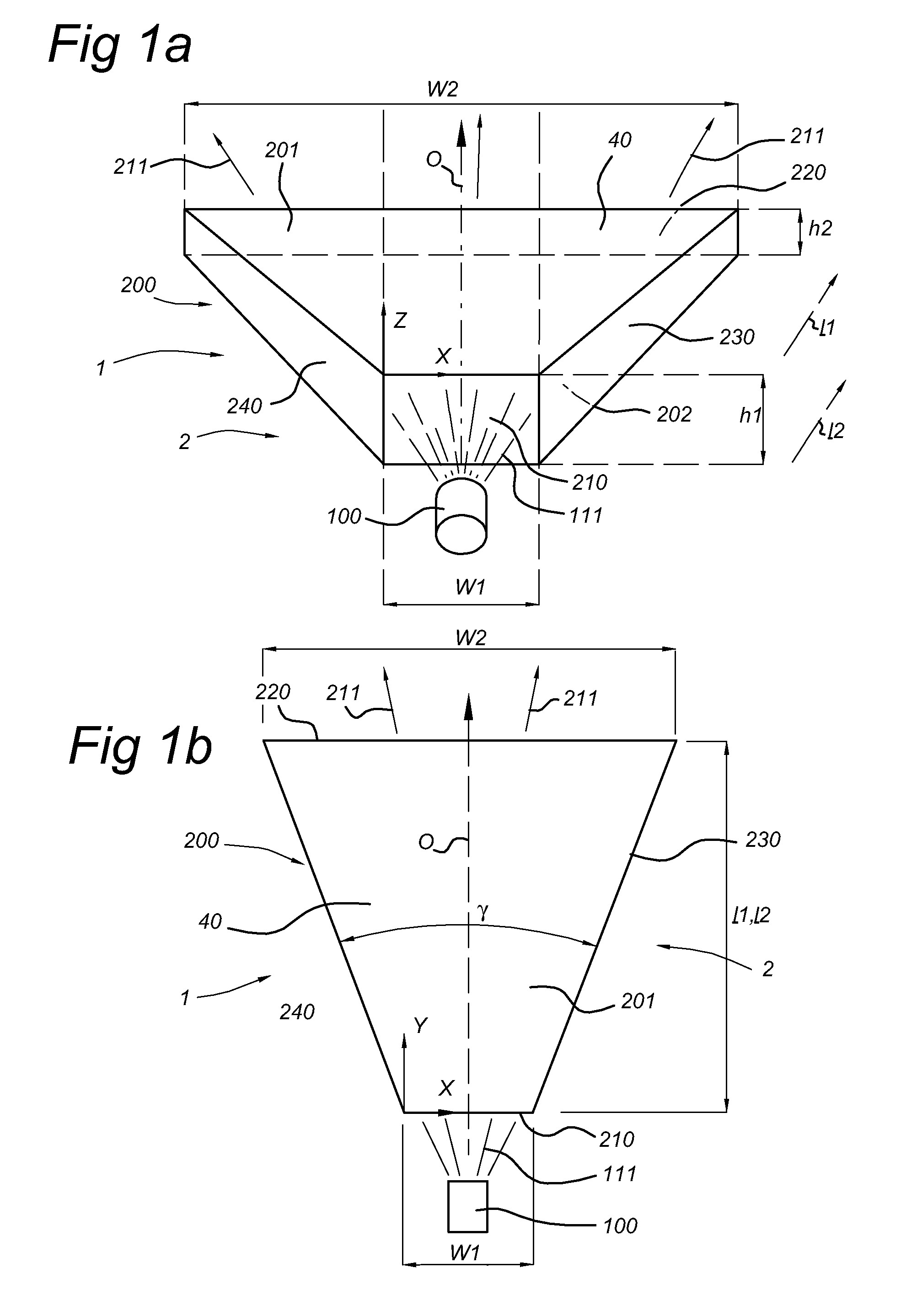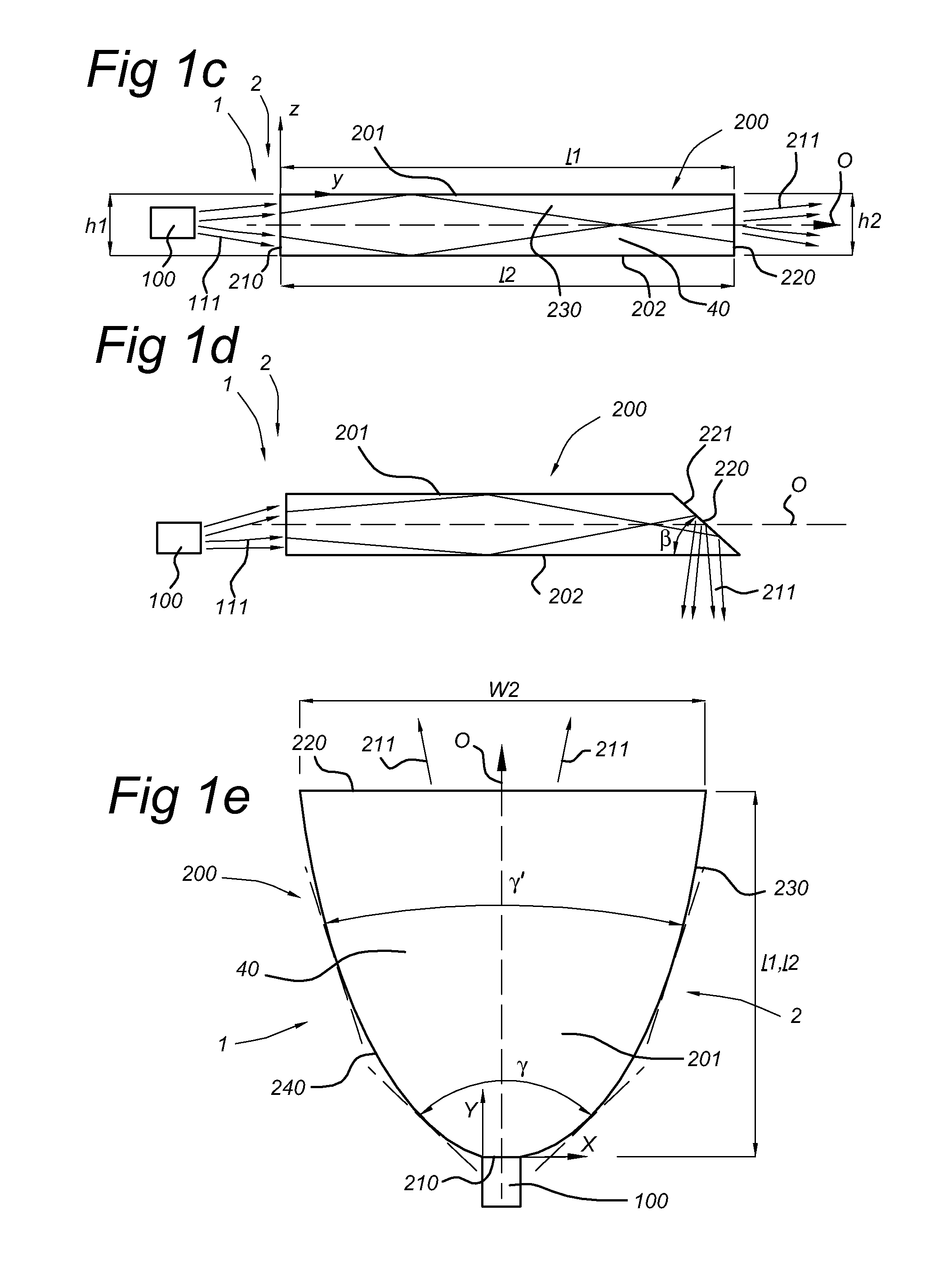Illumination device comprising a collimator
a collimator and collimator technology, which is applied in the direction of lighting and heating apparatus, planar/plate-like light guides, instruments, etc., can solve the problems of affecting the affecting the effect of the collimator, and reducing the thickness of the collimator, so as to achieve the effect of slim appearance of the system, easy integration with the surrounding environment, and elegant appearan
- Summary
- Abstract
- Description
- Claims
- Application Information
AI Technical Summary
Benefits of technology
Problems solved by technology
Method used
Image
Examples
Embodiment Construction
[0048]FIGS. 1a-1c schematically depicts an illumination device 1 arranged to generate device light 211. The illumination device 1 comprising a lighting unit, indicated with reference 2. The lighting unit 2, comprises a light source 100, arranged to generate light source light 111, and a substantially flat collimator 200, arranged to collimate the light source light 111 and provide the device light 211.
[0049]The light source 100 may be any light source, but may especially be a LED (including a plurality of LEDs).
[0050]The collimator 200 is a waveguide, which may be solid or hollow. Herein, it is further referred to solid waveguides, which are indicated with reference 40. The collimator 200 has an entrance window 210 and an edge window 220, a top collimator surface 201 (“top surface”) and a bottom collimator surface 202 (“bottom surface”), which are preferably arranged substantially parallel, a first collimating side edge 230 (“first side edge”) and a second collimating side edge (240...
PUM
 Login to View More
Login to View More Abstract
Description
Claims
Application Information
 Login to View More
Login to View More - R&D
- Intellectual Property
- Life Sciences
- Materials
- Tech Scout
- Unparalleled Data Quality
- Higher Quality Content
- 60% Fewer Hallucinations
Browse by: Latest US Patents, China's latest patents, Technical Efficacy Thesaurus, Application Domain, Technology Topic, Popular Technical Reports.
© 2025 PatSnap. All rights reserved.Legal|Privacy policy|Modern Slavery Act Transparency Statement|Sitemap|About US| Contact US: help@patsnap.com



